The Earth is composed of distinct layers: crust‚ mantle‚ outer core‚ and inner core. Understanding these layers is crucial for grasping geological processes and Earth’s internal dynamics.
Overview of the Earth’s Structure
The Earth is structured in four primary layers: the crust‚ mantle‚ outer core‚ and inner core; These layers vary in composition‚ temperature‚ and density‚ forming a complex system. The crust‚ the outermost layer‚ is solid and rocky‚ while the mantle beneath it is viscous and composed of hot‚ flowing rock. The outer core is liquid‚ primarily made of iron and nickel‚ generating Earth’s magnetic field. The inner core is solid‚ with extreme temperatures and pressures‚ playing a crucial role in Earth’s geophysical processes. Understanding this structure helps explain phenomena like earthquakes‚ volcanoes‚ and Earth’s magnetic properties‚ essential for geological studies and educational resources like Earth layers worksheets.
Importance of Understanding Earth’s Layers
Understanding Earth’s layers is vital for comprehending geological phenomena‚ natural disasters‚ and Earth’s internal processes. It aids in predicting earthquakes‚ volcanic eruptions‚ and understanding Earth’s magnetic field. This knowledge is essential for geologists‚ educators‚ and students‚ providing insights into Earth’s composition and dynamics. Educational tools like Earth layers worksheets simplify complex concepts‚ making them accessible for learners. By studying these layers‚ we gain a deeper appreciation of Earth’s structure and its role in sustaining life. This understanding also supports environmental conservation and resource management‚ highlighting the importance of Earth’s layers in both education and real-world applications.
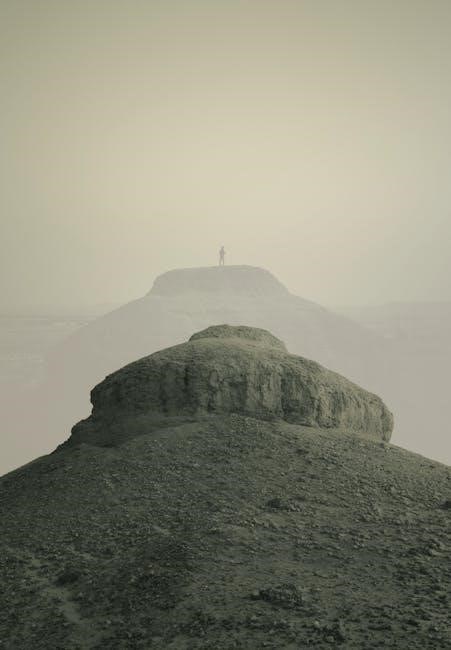
The Earth’s Layers
The Earth is divided into four primary layers: crust‚ mantle‚ outer core‚ and inner core. Each layer has unique characteristics‚ playing a vital role in Earth’s structure and function.
Crust: Composition and Characteristics
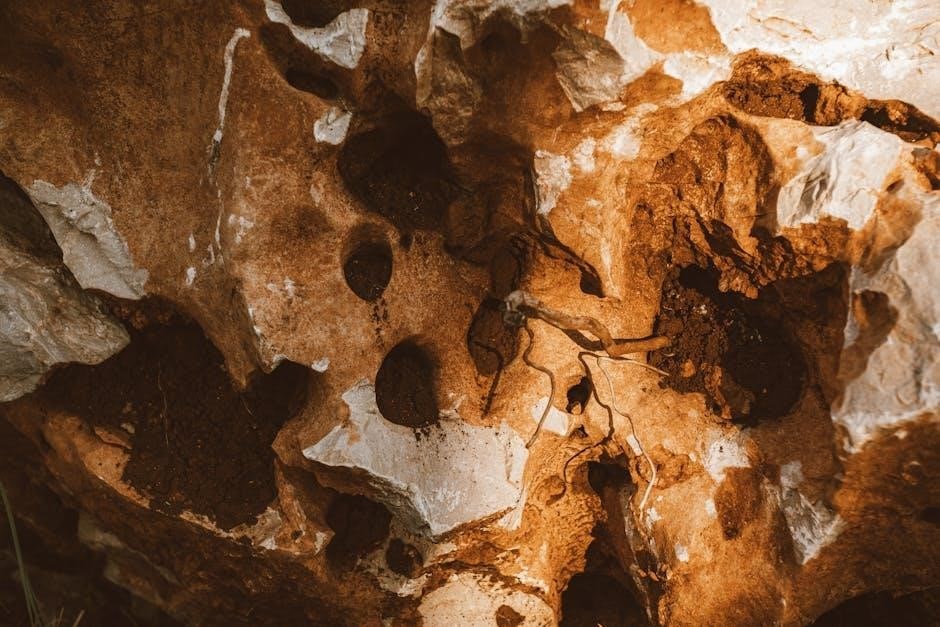
The Earth’s crust is the outermost layer‚ ranging in thickness from 5-70 km. It is composed of rocks‚ minerals‚ and sediments‚ varying in composition between oceans and continents. The continental crust is thicker and older‚ primarily made of granite‚ while the oceanic crust is thinner and denser‚ composed of basalt. The crust is fragmented into tectonic plates that move‚ influencing geological activities like earthquakes and volcanoes. Its composition varies‚ with elements like oxygen‚ silicon‚ and aluminum being predominant. The crust is dynamic‚ shaped by processes such as weathering‚ erosion‚ and plate tectonics‚ making it a critical component of Earth’s surface and a key area of study in geology.
Mantle: Structure and Functions
The Earth’s mantle is the thick layer beneath the crust‚ extending from about 35 km to 2‚900 km in depth. It is composed primarily of silicate minerals‚ rich in elements like magnesium‚ iron‚ and oxygen. The mantle is divided into the upper and lower mantle‚ with the boundary at approximately 410 km. It is solid but can flow slowly over long periods‚ a process known as convection‚ which drives plate tectonics. The mantle plays a crucial role in Earth’s thermal regulation‚ transferring heat from the core to the surface. Its composition and structure influence geological phenomena‚ including earthquakes and volcanic activity‚ making it a vital area of study in understanding Earth’s internal dynamics and processes.
Outer Core: Properties and Role
The outer core is a liquid layer‚ approximately 2‚250 km thick‚ composed primarily of iron and nickel‚ along with smaller amounts of sulfur and oxygen. Its liquid state allows for fluid motion‚ which generates Earth’s magnetic field through the geodynamo process. The outer core’s temperature ranges from 4‚000°C to 6‚000°C‚ and its pressure is immense‚ yet it remains liquid due to the balance of temperature and pressure conditions. This layer plays a critical role in protecting Earth by shielding it from harmful solar and cosmic radiation. The outer core’s movement also influences Earth’s rotation and magnetic field orientation‚ making it essential for navigation and geological studies. Understanding its properties helps explain Earth’s internal dynamics and magnetic behavior.
Inner Core: Key Features and Significance
The inner core is the Earth’s central‚ solid layer‚ composed primarily of iron and nickel‚ with a small amount of sulfur and oxygen. It has a thickness of approximately 1‚220 km and is the hottest part of the Earth‚ with temperatures ranging from 5‚000°C to 6‚000°C. Despite these extreme temperatures‚ the inner core remains solid due to immense pressure. It plays a crucial role in generating Earth’s magnetic field by interacting with the liquid outer core. The inner core’s stability and rotation influence the Earth’s magnetic field‚ which is vital for navigation and protecting the planet from harmful solar radiation. Understanding the inner core’s structure and properties is essential for studying Earth’s internal dynamics and magnetic behavior.

Earth Layers Worksheet PDF: Key Components
A comprehensive Earth layers worksheet PDF includes labeled diagrams‚ factual descriptions‚ and interactive exercises to help students understand and retain information about the Earth’s structure effectively.
What to Include in the Worksheet
A well-structured Earth layers worksheet should include clear diagrams of the Earth’s cross-section‚ detailed descriptions of each layer’s composition‚ and comparative data on their thickness and depth. Interactive elements like fill-in-the-blank exercises‚ matching games‚ and true/false questions can enhance engagement. Incorporating fun facts and historical discoveries about the Earth’s interior adds educational value. A key component is a labeling activity‚ where students identify and name each layer. Including a section for drawing or sketching the layers encourages visual learning; Finally‚ a review section with multiple-choice questions or short answers helps assess understanding and retention of the material. These components ensure a comprehensive and engaging learning experience for students of all ages.

Designing an Effective Worksheet Layout
An effective Earth layers worksheet layout should prioritize clarity and visual appeal. Use clear headings and subheadings to organize content‚ ensuring each section is visually distinct. Incorporate bullet points or numbered lists for easy readability. Avoid clutter by balancing text with white space‚ making the worksheet visually appealing. Use bold or italic fonts to highlight key terms or instructions. Include high-quality diagrams or illustrations of the Earth’s layers‚ labeled clearly. Interactive elements like fillable boxes or checkboxes can enhance engagement. Ensure the layout is consistent throughout the worksheet‚ with clear instructions at the top of each page. Finally‚ use color coding or shading to differentiate sections‚ making the worksheet both functional and visually engaging for students.
Benefits of Using an Earth Layers Worksheet
An Earth layers worksheet enhances learning by providing a structured format for understanding the Earth’s structure. It promotes engagement‚ retention‚ and hands-on exploration of geological concepts effectively.
Enhancing Student Engagement
Earth layers worksheets are designed to captivate students’ interest through interactive and visual learning. By incorporating diagrams‚ labeling exercises‚ and colorful illustrations‚ these resources make complex geological concepts accessible. Students can engage with hands-on activities such as coloring the Earth’s layers or matching terms to their definitions. This approach fosters a deeper connection to the material‚ making it more memorable. Additionally‚ the structured format of worksheets allows students to explore at their own pace‚ encouraging self-directed learning. Interactive elements like cross-section drawings and layer sequencing games further enhance engagement‚ transforming the learning process into an enjoyable and dynamic experience for students of all ages.
Improving Retention of Geographical Concepts
Earth layers worksheets play a vital role in reinforcing geographical knowledge by providing structured and repetitive learning opportunities. These resources help students internalize complex concepts through active recall and hands-on activities. By consistently reviewing and labeling the Earth’s layers‚ students build a strong foundation for understanding broader geological principles. The visual and tactile nature of worksheets enhances memory retention‚ as students engage with diagrams‚ cross-sections‚ and layer comparisons. Regular practice with these materials ensures that key information‚ such as the thickness and composition of each layer‚ becomes ingrained in their long-term memory. This structured approach makes abstract concepts more tangible and easier to recall‚ fostering academic success in geography and related sciences.
How to Create an Earth Layers Worksheet

Define learning objectives‚ outline Earth’s layers‚ include diagrams‚ and add interactive exercises. Ensure clarity and engagement for effective student understanding and retention of geological concepts.
Step-by-Step Guide to Designing the Worksheet
Start by defining clear objectives for the worksheet. Outline the Earth’s layers and their characteristics. Include diagrams with labels for visual learning. Add fill-in-the-blank and true/false questions to test knowledge. Provide a section for short answers to encourage critical thinking. Incorporate a crossword or word search for engagement. Ensure the layout is clean‚ with readable fonts and logical organization. Use color coding to differentiate layers. Add an answer key for reference. Review and test the worksheet with a small group to gather feedback. Make adjustments to improve clarity and effectiveness. This structured approach ensures the worksheet is both educational and user-friendly.
Incorporating Visual Aids and Diagrams
Visual aids are essential for enhancing understanding of Earth’s layers. Include labeled diagrams of the Earth’s cross-section‚ highlighting the crust‚ mantle‚ outer core‚ and inner core. Use color-coding to differentiate each layer. Add side-by-side comparisons of thickness and composition. Incorporate infographics to illustrate key facts‚ such as temperature ranges and material properties. Interactive elements like layer identification exercises can engage students. Consider adding a scale model to show proportional sizes. Diagrams of seismic wave paths can demonstrate how layers interact. Ensure visuals are clear‚ high-quality‚ and properly captioned. This approach makes complex concepts accessible and aids in retention. Visuals should complement written content‚ not overwhelm it.

Interactive Activities for Earth Layers Learning
Engage students with hands-on crafts‚ such as building layered Earth models or drawing cross-sections. These activities enhance understanding and make learning fun and interactive for all ages.
Layered Earth Model Crafts
Creating a layered Earth model is an engaging activity for students. Using materials like paper‚ clay‚ or foam‚ students can represent the Earth’s layers. Start with the inner core‚ then add the outer core‚ mantle‚ and crust. Each layer should be labeled and colored for clarity. This hands-on approach helps visualize the Earth’s structure. Students can also include additional features like the atmosphere or hydrosphere. The activity encourages creativity while reinforcing geological concepts. It’s an excellent way to complement an Earth layers worksheet‚ making learning interactive and fun. This craft project is ideal for classroom use and can be adapted to different age groups‚ ensuring a comprehensive understanding of Earth’s composition.
Earth Layer Cross-Section Drawing Exercises
Earth layer cross-section drawing exercises are a valuable tool for visualizing the Earth’s internal structure. Students are asked to draw a cross-sectional view of the Earth‚ labeling each layer: crust‚ mantle‚ outer core‚ and inner core. This activity helps students understand the relative thickness and position of each layer; They can also include arrows or labels to show processes like convection currents or plate tectonics. To enhance accuracy‚ provide proportional measurements for each layer. For younger students‚ pre-drawn templates can be used‚ while older students can create detailed diagrams. This exercise complements an Earth layers worksheet by reinforcing spatial awareness and geological concepts. It’s an effective way to make abstract ideas tangible and engaging for learners of all ages.
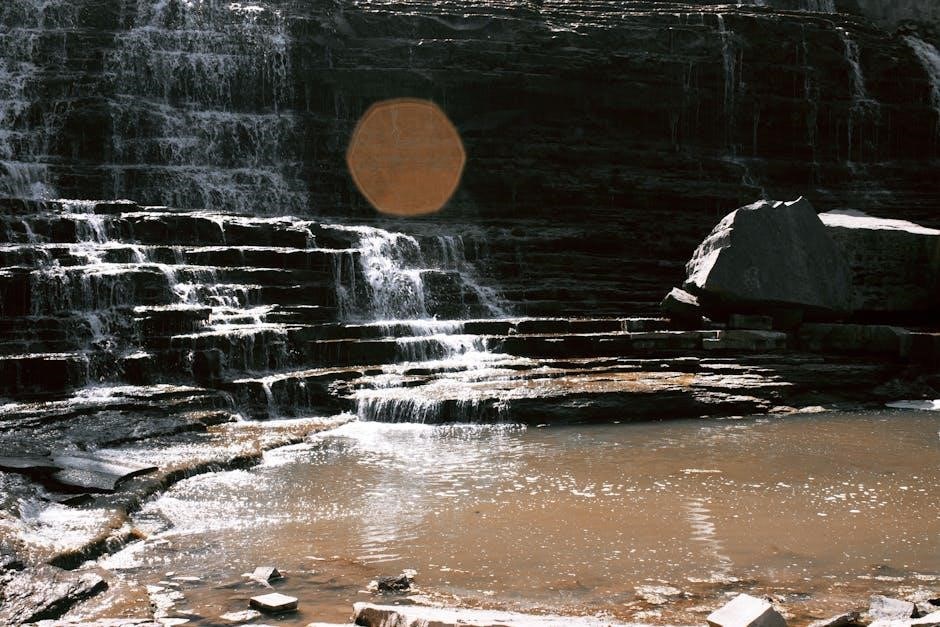
Assessing Knowledge with the Worksheet
The Earth layers worksheet PDF serves as an effective tool for evaluating students’ understanding of the Earth’s structure through structured questions and activities.
Multiple-Choice Questions
Multiple-choice questions in an Earth layers worksheet PDF are an effective way to assess students’ understanding of the Earth’s structure. These questions can cover various aspects‚ such as the composition of the crust‚ the role of the mantle‚ and the differences between the outer and inner core. They are designed to test recall and comprehension‚ ensuring students can identify key features and processes. Educators can include options that address common misconceptions to gauge students’ grasp of the material accurately. Clear instructions and answer keys are essential for fair assessment. This format also allows for quick grading‚ making it a practical tool for classroom use. Incorporating visuals‚ like diagrams‚ can enhance the questions’ effectiveness and engagement.
Short Answer and Essay Questions
Short answer and essay questions in an Earth layers worksheet PDF encourage students to think critically and express their understanding in detail. These questions often ask students to describe the composition‚ functions‚ and significance of each layer‚ such as the crust‚ mantle‚ outer core‚ and inner core. Essay questions may require students to explain processes like plate tectonics or the Earth’s magnetic field‚ which are influenced by its layered structure. This format allows students to demonstrate their ability to synthesize information and apply concepts to real-world scenarios. Educators can use these questions to assess deeper understanding and encourage students to support their answers with scientific evidence or diagrams for clarity.
Additional Resources for Earth Layers Study
Recommended websites and educational tools provide interactive content‚ while supplementary reading materials offer detailed diagrams and explanations to enhance Earth layers learning and exploration.
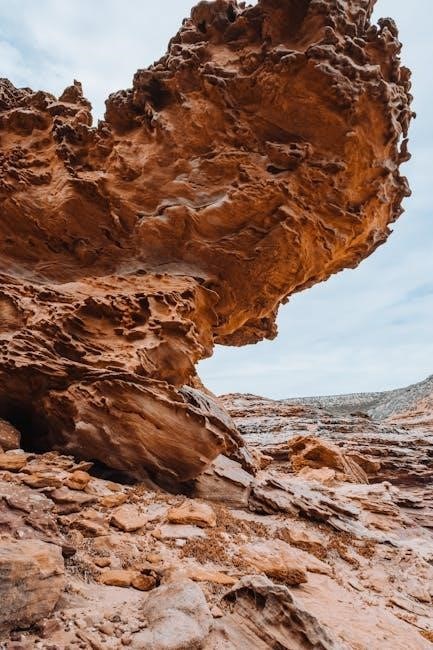
Recommended Websites and Educational Tools
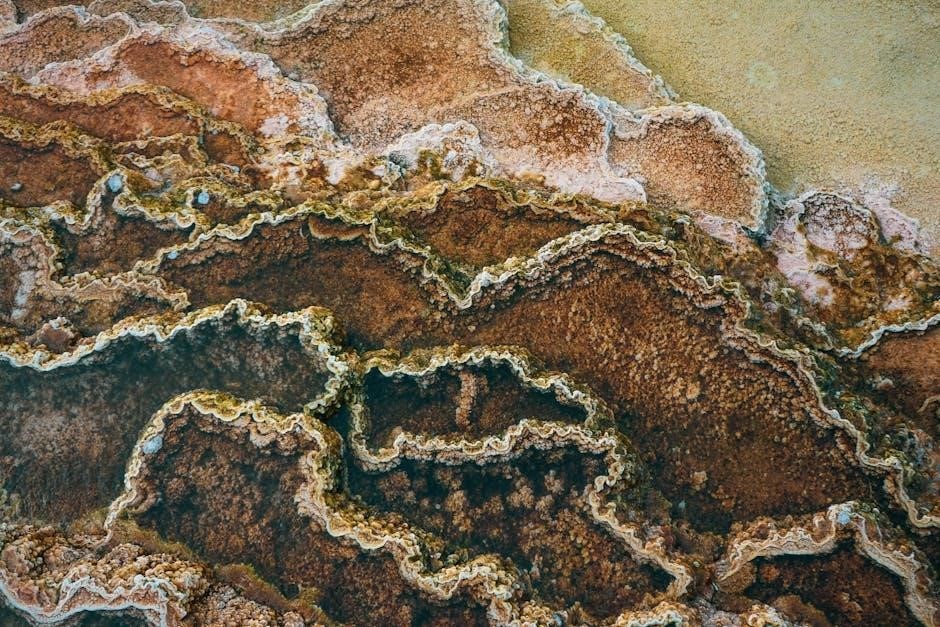
Several websites and tools are available to support Earth layers study. NASA’s Earth Science website offers detailed resources and visuals. National Geographic provides interactive Earth models. GeoGebra features 3D Earth layer simulations. EarthViewer by HHMI allows users to explore Earth’s history. These tools complement worksheet activities‚ offering visual and interactive learning experiences. They are ideal for students and educators seeking comprehensive resources. Utilizing these platforms enhances understanding of Earth’s structure and processes. They are accessible online and cater to various learning styles‚ making Earth layers study engaging and effective. These resources are essential for a deeper exploration of geological concepts.
Supplementary Reading Materials
Supplementary reading materials enhance understanding of Earth’s layers. Textbooks like “Earth Science for Students” and “Geology 101” provide detailed explanations. Online articles from reputable sources like ScienceDaily and Earth Magazine offer updated research. Educational guides such as “Understanding the Earth’s Structure” and “Exploring Geology” are also valuable. These resources often include diagrams‚ charts‚ and real-world examples. They cater to different learning styles‚ ensuring comprehensive comprehension. Additionally‚ e-books and PDF guides like “Earth Layers: A Comprehensive Guide” are accessible online. These materials are ideal for students and educators seeking deeper insights. They complement worksheets by offering additional context and visual aids‚ making learning more engaging and effective. Supplementary reading materials are essential for a well-rounded understanding of Earth’s layers.
Understanding Earth’s layers is vital for grasping geological processes. Worksheets and supplementary materials aid in visualizing and retaining this information‚ making complex concepts accessible for students and educators alike.
The Earth is structured into four primary layers: the crust‚ mantle‚ outer core‚ and inner core. Each layer has distinct characteristics and functions‚ contributing to Earth’s geological activity. The crust is the outermost‚ solid layer‚ while the mantle beneath it is viscous and capable of slow flow. The outer core is liquid‚ primarily composed of iron and nickel‚ generating Earth’s magnetic field. The inner core is solid and central‚ maintaining Earth’s stability. Understanding these layers is essential for studying earthquakes‚ volcanoes‚ and Earth’s internal dynamics. Worksheets and supplementary materials‚ such as diagrams and cross-sections‚ are valuable tools for visualizing and retaining this information‚ making complex geological concepts more accessible for students and educators alike.
Encouragement for Further Exploration
Exploring the Earth’s layers is a fascinating journey that deepens our understanding of our planet’s structure and processes. By using tools like Earth layers worksheets‚ students can engage with visual and interactive content‚ making learning more enjoyable and effective. Encourage further exploration by incorporating hands-on activities‚ such as building layered Earth models or drawing cross-sections‚ to reinforce concepts. Additionally‚ leveraging online resources and educational apps can provide dynamic visuals and real-time data‚ sparking curiosity and interest. Motivate learners to ask questions‚ conduct research‚ and apply their knowledge to real-world geological phenomena. This approach not only enhances academic performance but also fosters a lifelong appreciation for Earth sciences and environmental stewardship.
